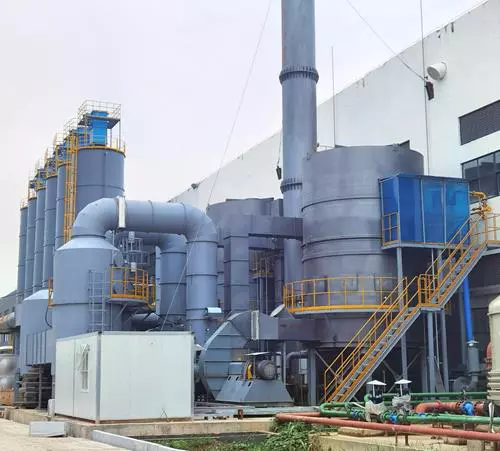How to prevent corrosion in a recuperative thermal oxidizer?
소개
Corrosion is a significant concern in recuperative thermal oxidizers (RTOs). It can diminish the efficiency and lifespan of the system, leading to increased maintenance costs and potential safety hazards. This article will delve into various strategies to prevent corrosion in a recuperative thermal oxidizer, ensuring optimal performance and longevity of the equipment.
Selection of Corrosion-Resistant Materials
– Use of stainless steel or other corrosion-resistant alloys for the construction of critical components, such as heat exchangers and ductwork.
– Coating the interior surfaces with protective materials, such as ceramic coatings or corrosion-resistant paints, to create a barrier against corrosive gases.
Proper System Design
– Implementing proper airflow design to minimize the accumulation of corrosive byproducts.
– Incorporating proper insulation to reduce heat transfer and minimize condensation, which can accelerate corrosion.
– Installation of corrosion monitoring systems to detect any signs of corrosion at an early stage, allowing for timely intervention.
Effective Maintenance Practices
– Regular inspection of the system for any signs of corrosion or damage.
– Cleaning the system regularly to remove any corrosive deposits or contaminants.
– Prompt repair or replacement of damaged or corroded parts to prevent further degradation.
Optimizing Operating Conditions
– Maintaining the operating temperature within the recommended range to avoid the formation of corrosive byproducts.
– Ensuring proper fuel combustion to minimize the release of corrosive gases.
– Implementing effective control measures, such as pH adjustment or the addition of corrosion inhibitors, in the gas stream to mitigate corrosion risks.
결론
Preventing corrosion in a recuperative thermal oxidizer is crucial for maintaining its efficiency and longevity. By selecting corrosion-resistant materials, designing the system properly, implementing effective maintenance practices, and optimizing operating conditions, the risk of corrosion can be significantly reduced. Regular monitoring and timely intervention are essential to ensure the continued performance of the equipment. By prioritizing corrosion prevention, industries can enhance the operational reliability and longevity of their recuperative thermal oxidizers.

Preventing Corrosion in a Recuperative Thermal Oxidizer
Our company is a high-end equipment manufacturer specializing in comprehensive treatment of volatile organic compounds (VOCs) and carbon reduction and energy-saving technology. We have four core technologies: thermal energy, combustion, sealing, and self-control. In addition, we have the ability to simulate temperature fields and air flow fields, model calculations, and test organic material high-temperature incineration oxidation characteristics through ceramic heat storage materials, molecular sieve adsorption materials, and VOCs. Our RTO technology R&D center and waste gas carbon reduction engineering technology center are located in Xi’an, with a production base of 30,000 square meters in Yangling. Our core technology team comes from the Institute of Liquid Rocket Engine Research of China Academy of Aerospace (Sixth Academy of Aerospace); the company has more than 360 employees, including more than 60 R&D technology backbones, including 3 senior engineers at the research fellow level, 6 senior engineers, and 130 thermodynamics PhDs. Our core products are the rotary valve-type heat storage oxidation incinerator (RTO) and the molecular sieve adsorption and concentration rotary wheel. We combine our own environmental protection and thermal energy system engineering technology expertise to provide customers with comprehensive solutions for industrial waste gas treatment and carbon reduction and utilization.

Our company has a series of certifications, patents, and honors including:
- 지식재산권 관리체계 인증
- 품질경영시스템 인증
- 환경경영시스템 인증
- Construction Enterprise Qualification
- 하이테크 기업
- Rotary Heat Storage Oxidation Furnace Rotary Valve Patent
- Rotary Wing Heat Storage Incineration Equipment Patent
- Disc-Shaped Molecular Sieve Rotary Wheel Patent

When selecting a suitable RTO device, it is important to:
- Determine the waste gas characteristics
- Understand the local regulations and set emission standards
- 에너지 효율성 평가
- 운영 및 유지 관리를 고려하세요
- 예산 및 비용 분석 수행
- Choose the appropriate type of RTO
- Consider environmental and safety issues
- 성능 테스트 및 검증 수행
Our service process includes:
- Consultation and evaluation: preliminary consultation, on-site inspection, needs analysis
- Design and program development: program design, simulation and analysis, program review
- Production and manufacturing: customized production, quality control, factory testing
- Installation and commissioning: on-site installation, commissioning and operation, training services
- After-sales support: regular maintenance, technical support, spare parts supply
Our company is a one-stop solution provider. We have a professional team that can tailor RTO solutions for customers.
저자: 미야
